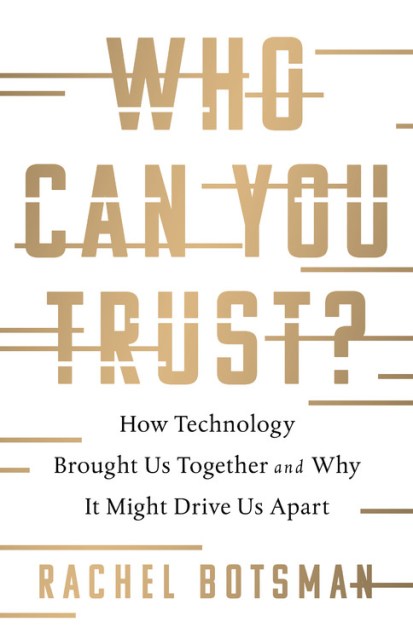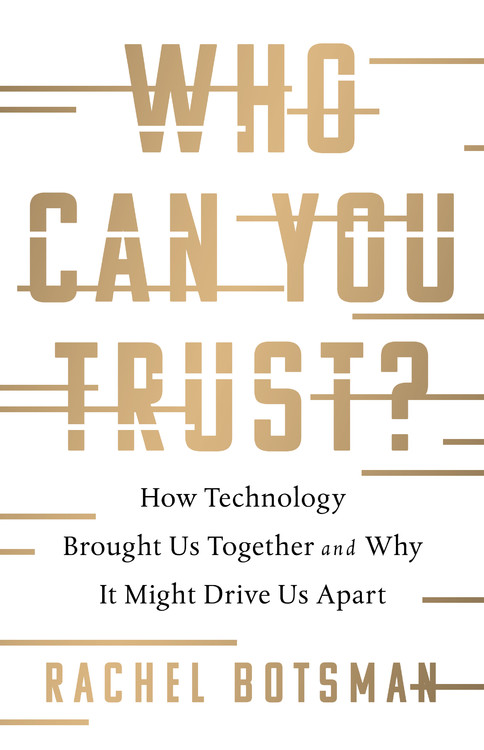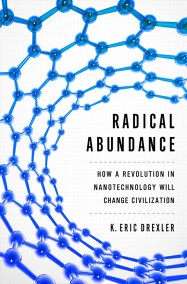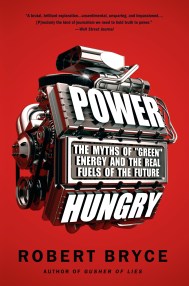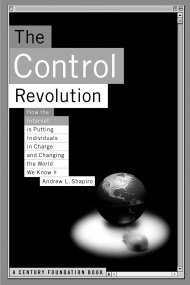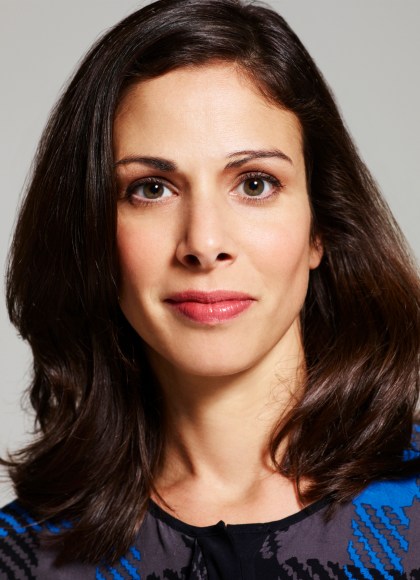Promotion
Use code MOM24 for 20% off site wide + free shipping over $45
Who Can You Trust?
How Technology Brought Us Together and Why It Might Drive Us Apart
Contributors
Formats and Prices
Price
$39.00Price
$49.00 CADFormat
Format:
- Hardcover $39.00 $49.00 CAD
- ebook $9.99 $12.99 CAD
- Audiobook Download (Unabridged)
- Trade Paperback $16.99 $22.49 CAD
This item is a preorder. Your payment method will be charged immediately, and the product is expected to ship on or around November 14, 2017. This date is subject to change due to shipping delays beyond our control.
Also available from:
In this revolutionary book, world-renowned trust expert Rachel Botsman reveals that we are at the tipping point of one of the biggest social transformations in human history — with fundamental consequences for everyone. A new world order is emerging: we might have lost faith in institutions and leaders, but millions of people rent their homes to total strangers, exchange digital currencies, or find themselves trusting a bot. This is the age of “distributed trust,” a paradigm shift driven by innovative technologies that are rewriting the rules of an all-too-human relationship.
If we are to benefit from this radical shift, we must understand the mechanics of how trust is built, managed, lost, and repaired in the digital age. In the first book to explain this new world, Botsman provides a detailed map of this uncharted landscape — and explores what’s next for humanity.
Genre:
-
In a time when people are doubting experts, suspicious of the media, and losing faith in government and business, Rachel Botsman is here with a lucid analysis of what it takes to build and rebuild trust. Trust me: this is a book you need to read.AdamGrant, New York Times bestselling author of Give and Take, Originals, andOption B with Sheryl Sandberg
-
"Who Can You Trust is beautifully written primer for a new world that sets you up to be a better citizen, consumer, and parent. I quickly learnt so much about so many things I wanted to know."Sherry Turkle, Professor, MIT; author of Reclaiming Conversation and Alone Together
-
"Rachel Botsman's eye-opening, timely book delves into the unfolding crisis of trust spreading throughout the world. She brilliantly describes how the established trust framework is undergoing a radical transformation as digital technologies take root in every facet of our lives. Read this book and you'll be ready for a revolution in trust that rewrites the rules of human interaction."Marc Benioff, Chairman & CEO, Salesforce
-
"A timely and accessible framework for understanding what trust is, how it works, why it matters and how it is evolving. It is an important primer to the obstacles and opportunities we face as a society if we are to repair and redefine trust across socioeconomic, political and cultural divides."Rebecca MacKinnon, Washington Post
-
"Ms. Botsman has found a rich theme here and a fascinating way of interpreting technological change."Philip Delves Broughton, Wall Street Journal
-
"Witty... reveals some deep truths."The American Spectator
-
"Beautifully-written... the thesis is completely compelling. This is an important book."Andy Haldane, Chief Economist, Bank of England
-
"Profound...will cause you to think deeply about your business, your relationships and your life."Don Tapscott, bestselling author of 16 books, most recently The Blockchain Revolution
-
"This book perfectly walks the reader through the past, present, and future of trust as we know it. Rachel's expertise on this topic is unmatched. It's an absolute must-read for business leaders and everyday consumers alike."Nick Shapiro, Global Head of Trust & Risk Management, Airbnb
-
"In this extremely thought-provoking new book, Rachel Botsman educates and entertains as she reveals with expertise how our lives are already changing more than we know. A must-read for anyone interested in how the world works - and will work in the future."Will Dean, MBE, CEO Tough Mudder
-
"Sharp, penetrating, and obsessively researched, this book will open your eyes to a phenomenon that is as important as it is impossible to ignore."Leigh Gallagher
-
"An enjoyably accessible, but cautiously skeptical, tour through this hugely transformative, but barely recognized, shift in our sometimes-irrational approach to trust...an excellent - and apparently trustworthy - primer to this fundamentally upturned society in which we may be spending the rest of our lives."Winnipeg Free Press
- On Sale
- Nov 14, 2017
- Page Count
- 336 pages
- Publisher
- PublicAffairs
- ISBN-13
- 9781541773677
Newsletter Signup
By clicking ‘Sign Up,’ I acknowledge that I have read and agree to Hachette Book Group’s Privacy Policy and Terms of Use
